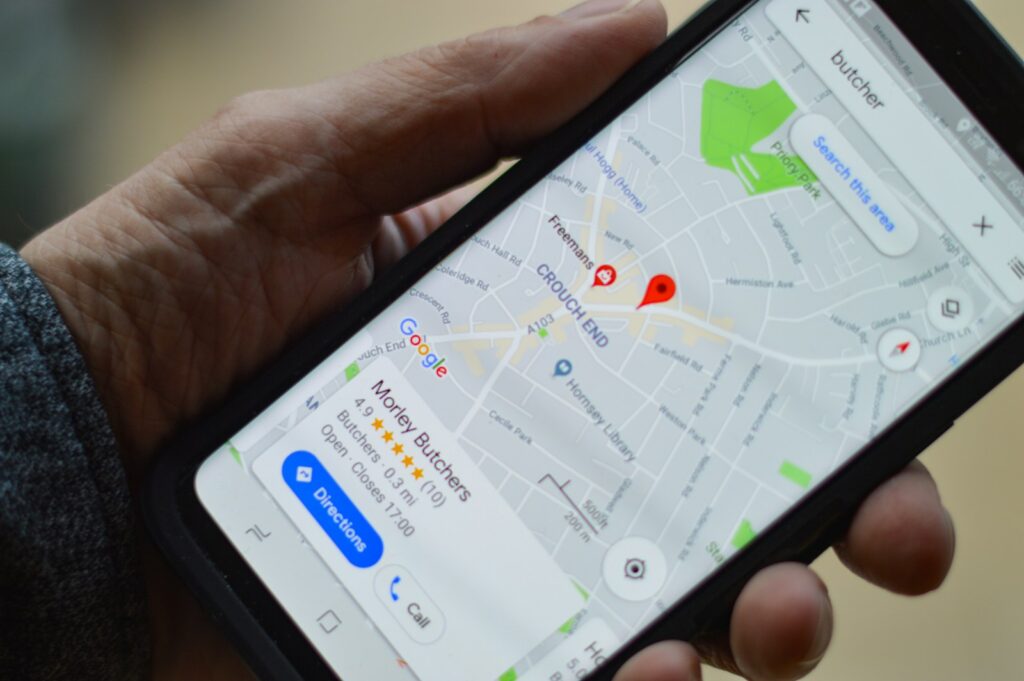Search engine optimization (SEO) can be one of the most powerful tools for small business growth—when done right. But for many small business owners, SEO feels like an intimidating and ever-changing puzzle.
Even when you do your best, a few overlooked SEO mistakes can prevent your website from ranking and drive potential customers to competitors instead.
The good news? You can fix these errors once you know what to look for. In this post, we’ll break down the most common small business SEO mistakes, why they matter, and exactly how to fix them—without needing to be a tech expert.
Key Takeaways
-
Many SEO issues stem from poor site structure, missing keywords, and lack of quality content.
-
Fixing SEO mistakes can drastically improve your website’s visibility in Google search results.
-
You don’t need to be an expert—you just need to follow a checklist and stay consistent.
-
Small business owners should prioritize user experience, mobile responsiveness, and regular content updates.
-
Tools like Google Search Console and Yoast SEO can help identify and correct problems fast.
Why Small Business SEO Matters
Most customers today search online before buying. Whether you’re a roofer, café owner, attorney, or boutique shop—being visible on Google is critical.
With good SEO:
-
You get found by local and ready-to-buy customers.
-
You reduce ad spend with organic traffic.
-
You build long-term authority and trust.
But if your SEO is broken, you’re invisible.
Let’s look at the biggest pitfalls hurting small business websites and how to fix them.
1. Ignoring Keyword Research
Why It’s a Problem
If you’re guessing what your audience searches for, you’ll likely miss the mark.
Common Mistakes
-
Targeting generic keywords like “shoes” instead of “women’s running shoes in Miami”
-
Not using tools like Google Keyword Planner, Ubersuggest, or Ahrefs
-
Stuffing in keywords without context
How to Fix It
-
Use keyword tools to find terms with high search volume and low competition.
-
Focus on long-tail, local-specific keywords.
-
Naturally weave keywords into headings, titles, and content.
Pro Tip: Think like your customer. What would you search if you needed your service?
2. Weak or Duplicate Content
Why It’s a Problem
Google ranks helpful, original content. Repetitive or shallow content gets ignored—or worse, penalized.
Common Mistakes
-
Using the same content across multiple pages
-
Thin blog posts (under 300 words) with no depth
-
Keyword stuffing without offering value
How to Fix It
-
Aim for high-quality content that answers real customer questions.
-
Create blog posts that are at least 1,000–2,000 words when covering in-depth topics.
-
Use headings, lists, and visuals to keep it engaging.
3. Forgetting Title Tags and Meta Descriptions
Why It’s a Problem
Title tags and meta descriptions are the first thing users (and Google) see in search results. If they’re missing or generic, people won’t click.
Common Mistakes
-
Missing or duplicate title tags
-
Generic meta descriptions
-
Titles longer than 60 characters or cut off in search
How to Fix It
-
Write unique, keyword-rich titles for every page.
-
Keep meta descriptions under 160 characters and use them to entice clicks.
-
Include your location and service for local relevance.
4. Not Optimizing for Mobile
Why It’s a Problem
Over 60% of searches now come from mobile devices. If your site isn’t mobile-friendly, users bounce—and Google notices.
Common Mistakes
-
Tiny text and buttons
-
Content cut off on mobile screens
-
Slow loading times
How to Fix It
-
Use a responsive design that adjusts to any screen.
-
Run a mobile usability test with Google Search Console.
-
Compress images to improve loading speed.
5. Slow Website Speed
Why It’s a Problem
A delay of just 1 second can drop conversions by 7%. Google also uses speed as a ranking factor.
Common Mistakes
-
Large uncompressed images
-
Bloated plugins or scripts
-
Cheap or outdated hosting
How to Fix It
-
Use tools like Google PageSpeed Insights or GTmetrix to find issues.
-
Optimize image sizes and switch to modern formats like WebP.
-
Choose reliable hosting with fast servers.
6. Not Setting Up Google Tools
Why It’s a Problem
Without Google Analytics or Search Console, you’re flying blind. You won’t know what’s working or what needs improvement.
Common Mistakes
-
Not installing tracking codes
-
Ignoring alerts in Google Search Console
-
Failing to submit a sitemap
How to Fix It
-
Set up Google Analytics to track traffic, conversions, and bounce rate.
-
Use Google Search Console to find broken links, index issues, and keyword performance.
-
Submit your sitemap to Google to help it crawl your site faster.
7. Missing Local SEO Signals
Why It’s a Problem
If you’re a local business, you must show up in Google Maps and “near me” searches.
Common Mistakes
-
No Google Business Profile
-
Inconsistent business name, address, and phone number (NAP) across listings
-
Not using local keywords
How to Fix It
-
Claim and optimize your Google Business Profile.
-
Make sure NAP is consistent across your website and all directories.
-
Use location-specific keywords like “plumber in Tampa” in your content.
8. Broken Links and 404 Errors
Why It’s a Problem
Dead pages frustrate users and signal poor quality to search engines.
Common Mistakes
-
Deleting pages without redirects
-
Linking to outdated or removed content
-
Not scanning for broken links
How to Fix It
-
Use tools like Screaming Frog or Broken Link Checker.
-
Set up 301 redirects for removed pages.
-
Regularly audit your site for broken internal and external links.
9. No Internal Linking Strategy
Why It’s a Problem
Internal links help Google understand your site structure and spread SEO value across pages.
Common Mistakes
-
Only linking to the homepage or contact page
-
No links between blog posts and service pages
-
Using generic anchor text like “click here”
How to Fix It
-
Link related blog posts to each other.
-
Use descriptive anchor text with keywords.
-
Link service pages to relevant blog content and vice versa.
10. Not Updating Content Regularly
Why It’s a Problem
Outdated content tells Google and your users that your site may no longer be relevant.
Common Mistakes
-
Leaving blogs untouched for years
-
Using old statistics or tools
-
Not updating product or service descriptions
How to Fix It
-
Schedule quarterly content reviews.
-
Refresh old posts with new information, images, or data.
-
Add new blog content at least once per month.
Bonus: The SEO Audit Checklist
Here’s a quick reference table you can use to fix SEO errors fast:
| SEO Element | Common Issue | Fix |
|---|---|---|
| Keywords | Missing or misused | Use tools to find and apply correctly |
| Title Tags & Meta Descs | Missing or not optimized | Write unique, keyword-rich text |
| Mobile Optimization | Site not mobile-friendly | Use responsive design, test on devices |
| Page Speed | Slow load times | Compress images, upgrade hosting |
| Local SEO | No Google Business Profile | Claim and optimize it |
| Broken Links | 404 errors | Redirect or fix links |
| Internal Links | Few or poor links | Link related pages naturally |
| Google Tools | Not installed or monitored | Set up Analytics and Search Console |
| Content Quality | Thin or duplicated | Write fresh, original, helpful content |
Fix Your SEO, Grow Your Business
If your website isn’t bringing in customers, chances are SEO mistakes are holding you back. At Creative Advertising Blog, we simplify digital marketing for small business owners just like you.
👉 Ready to clean up your SEO and boost your rankings?
Explore our expert guides and SEO resources to grow your business the smart way. Bookmark us at creativeadvertisingblog.com and start optimizing today!
Frequently Asked Questions: Small Business SEO Mistakes
What are the most common SEO mistakes small businesses make?
Small businesses often skip keyword research, ignore meta descriptions, use duplicate content, forget local SEO, or neglect mobile optimization. All of these hurt rankings and visibility.
How do I fix SEO errors on my website?
Use tools like Google Search Console, Screaming Frog, and Yoast SEO. Focus on improving content quality, fixing broken links, optimizing page speed, and structuring your site for users and search engines.
Can SEO really help a small business grow?
Yes! Small business SEO helps you attract customers actively searching for your services, which leads to more calls, more foot traffic, and more sales—all without paying for ads.
How often should I update my SEO?
Review your SEO at least every 3 months. Update old blog posts, fix broken links, and check keyword performance to stay ahead of the curve.
Do I need to hire an SEO expert?
Not necessarily. Many fixes can be done using simple tools and best practices. However, hiring an expert can save time and help avoid costly mistakes if you’re unsure.
Why is mobile SEO important?
Because the majority of users now browse from mobile devices. If your site doesn’t look or work well on a phone, Google may rank you lower—and users may leave.
How long does it take to see results from SEO?
Typically 3–6 months for noticeable changes, depending on your industry, competition, and how consistent your efforts are.
What is local SEO and why does it matter?
Local SEO targets customers in your geographic area. It’s vital for businesses that rely on nearby customers, such as restaurants, contractors, and service providers.
How can I check if my SEO is working?
Monitor organic traffic in Google Analytics, track keyword rankings, and watch how many leads or calls you’re getting from your website.
What tools can help fix small business SEO mistakes?
Top tools include:




0 Comments